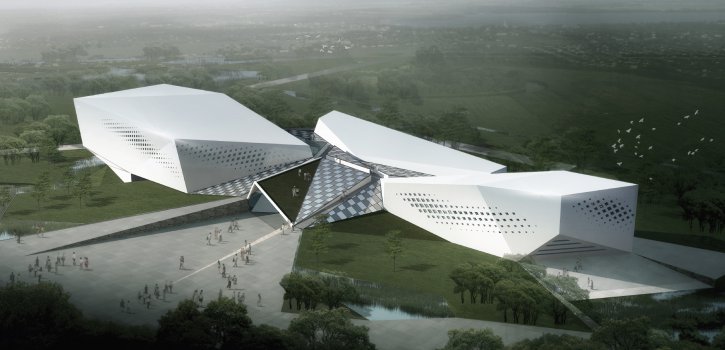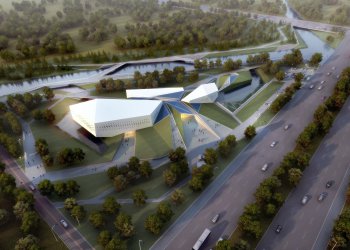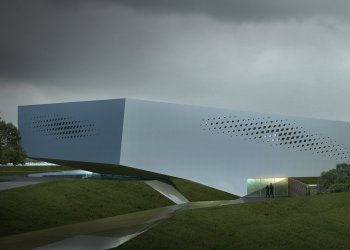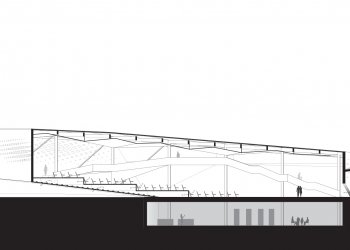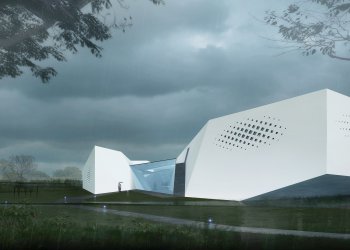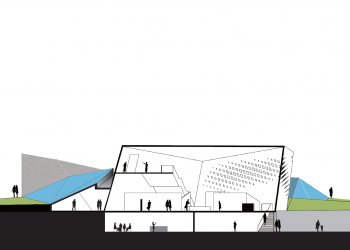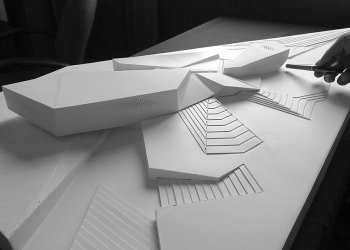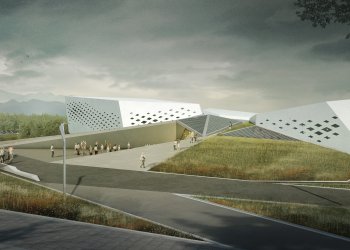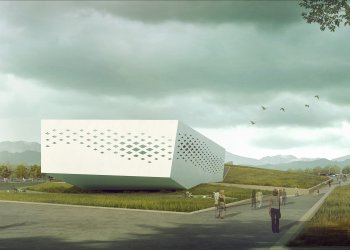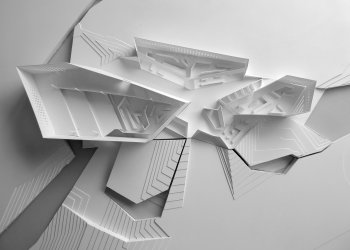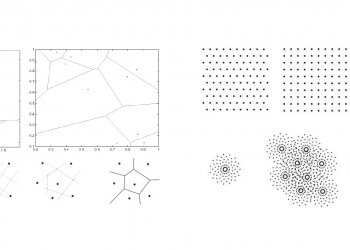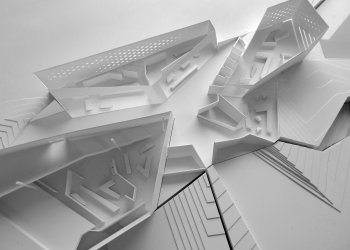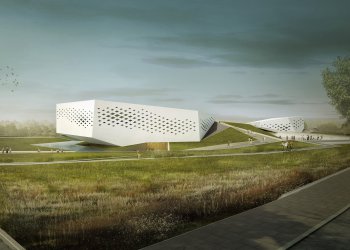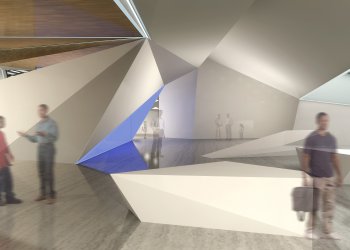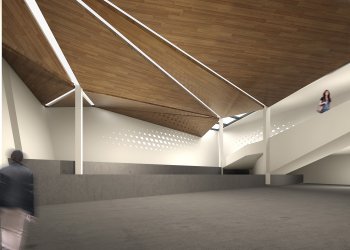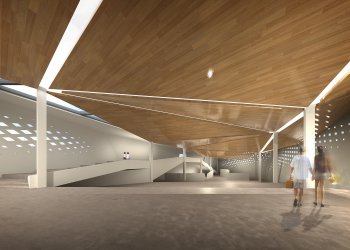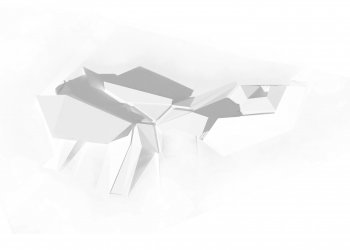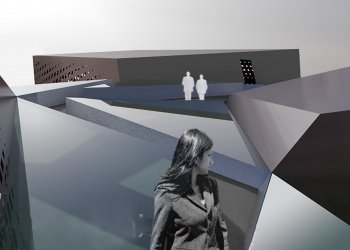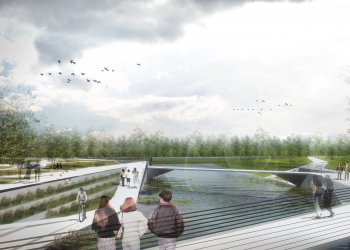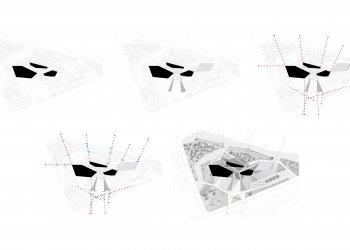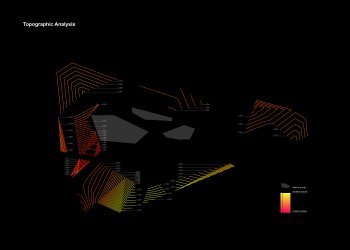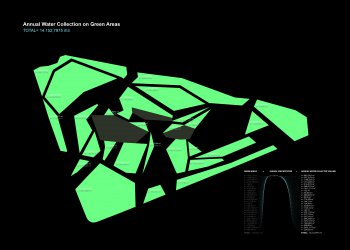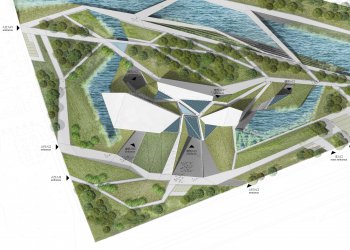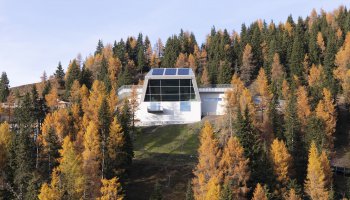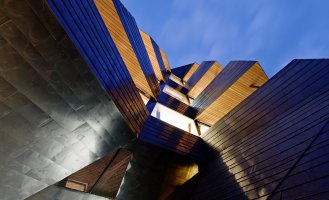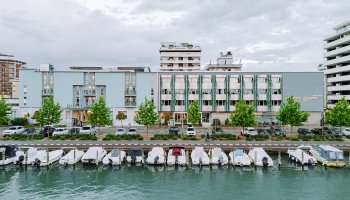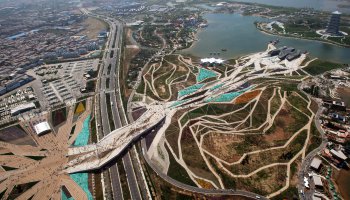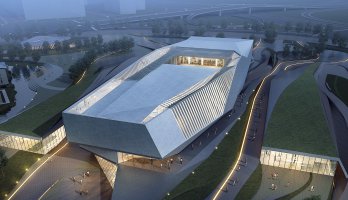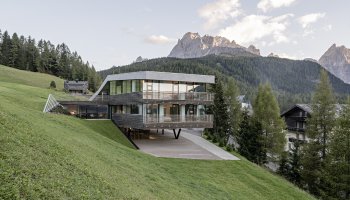The inspiration for the Low-Carbon Exhibition Centre stems from geology: carbon is a product of intense geological forces and processes, its polygonal structure at once incredibly strong while adhering to linear and planar principles. This project explores how crystalline geometry can produce a material economy while articulating the part-to-whole relationship of the internal organisation.
LOW CARBON EXHIBITION CENTRE
TYPE Cultural, Exhibition, Public space
STATUS Competition 1st prize, under Construction
LOCATION Wuxi, China
YEAR 2012 - 2014
CLIENT Taihu New Town of Wuxi
DESIGN TEAM Eva Castro, Li Gann, Ulla Hell, Bo Jing, Sheng Jing, Holger Kehne, Lewen, Xiang Li, Wenling Li, Xiaoju Liao, Liu, Tool Nampanwiwat, Libny Pacheco, Peter Pichler, Pingshan Qu, Chuan Wang, Zeqing Xu
The competition required three main programs: multifunctional hall, interactive hall, temporary exhibition space. These crystalline primary components are connected by a tessellated mesh, merging internally into a continuous yet differentiated spatial experience. The main entrance leads into a central daylit atrium from which all other spaces can be seen and accessed. In addition to the clear main circulation, supplementary pathways provide flexibility and complexity. Visitors can also enter from the basement of the auditorium or multifunctional hall, where building services are partially visible as part of the exhibition. From here, one can access the ground floor, the atrium, or ascend to the mezzanine level, which opens onto the accessible roofscape.
Another important aspect is the integration of the building with the ground plane. Sunken two meters into the earth, visitors descend to the entrance. The volume of excavated earth is redistributed as hills surrounding the building, forming an articulated landscape which, together with the built volumes, maximizes rainwater collection in specially designed water basins. These basins feed into two large water bodies, making the building appear as a bridge over a river while also cooling the air intake for natural ventilation.
